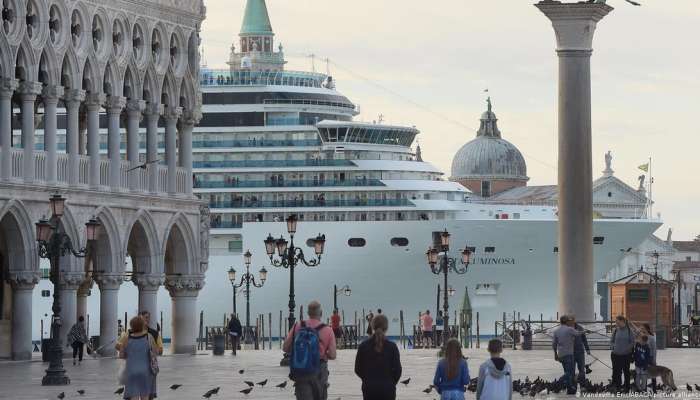
Venice: For years, there has been discussion about whether or not Venice will lose its UNESCO World Heritage status.
The 45th World Heritage Committee session, to be held in Riyadh from September 10 to 25, 2023, will decide if the lagoon city should be classified as an endangered site. Experts from UNESCO, the United Nations Educational, Scientific and Cultural Organisation (UNECSO), certainly think Venice should be placed on the so-called red list.
Venice’s city council prefers not to comment on the issue. And it’s not like being moved to the red list would automatically take away Venice’s World Heritage status. The move is more like a warning, giving authorities a chance to react and preserve the criteria that made UNESCO bestow the honor on Venice in the first place.
Still, decision-makers in Rome, Italy, have reacted harshly to the prospect of Venice losing its World Heritage status. State secretary for culture Vittorio Sgarbi dismissed UNESCO’s warnings as “alarmist,” adding that “Venice’s pre-eminence as a world heritage site does not need to be confirmed by anyone.”
A recent UNESCO report said that “human intervention, including continuing development, the impacts of climate change and mass tourism threaten to cause irreversible changes” to Venice. It further found that countermeasures taken by local and national authorities were insufficent.
Therefore, UNESCO recommends that Venice be classified as an endangered World Heritage site, as “such inscription will result in greater dedication and mobilisation of local, national and international stakeholders, for the development of effective and sustainable corrective measures that address these long-standing issues.”
According to the report, several construction projects will diminish Venice’s appeal, “particularly high-rise buildings which [...] are likely to have significant negative visual impact.” Moreover, “sea level rise, extreme weather events and other climate change induced phenomena are causing deterioration and damage” to the built environment. UNESCO also found that ongoing conversion of housing into tourist accommodations is damaging the city’s cultural and social identity, concluding that “many of these issues […] which also have a cumulative adverse impact, remain unresolved or only temporarily addressed.”
Former Venice mayor Massimo Cacciari criticised the report, telling Italian news agency Adnkronos: “As if Venice needs UNESCO to be an asset to humanity!”
While he recognised Venice faced problems, he said mass tourism was impacting the lagoon city just as much as Florence and Rome. He added that Italy’s economy is reliant on vacationers. “Fortunately, tourism exists,” Cacciari said. “Do we want to lose it because UNESCO tells us it’s harmful?”
Lidia Fersuoch, who heads Italia Nostra, a non-profit dedicated to protecting Italy’s historical, artistic and environmental legacy, disagrees. She approached UNESCO in 2011 requesting Venice be added to the list of endangered sites.
Venice has been classified as a World Heritage site since 1987, with UNESCO lauding the lagoon city as “a unique artistic achievement.” It praises its “incomparable series of architectural ensembles” and highlights that “Venice symbolises the people’s victorious struggle against the elements as they managed to master a hostile nature.” The city required considerable architectural skill to build since it consists of 118 small islands.
UNESCO says placing a World Heritage site on its endangered list is not a form of punishment. Instead, this is intended to help “preserve these exceptional places for future generations,” as Peter Martin of the German UNESCO Commission told DW. To help this preservation effort, the World Heritage Committee identifies how threats to World Heritage sites can be averted or mitigated, he added. Today, 55 sites are on UNESCO’s endangered list.
Placing sites on the red list and suggesting measures to retain their UNESCO World Heritage status does pay off, Martin said. One example is Salonga National Park in the Democratic Republic of Congo, which was removed from the endangered list in the summer of 2021 after various protection measures were successfully adopted. Two years earlier, the Church of the Nativity in Bethlehem was taken off the red list after extensive restoration work was carried out on the basilica.
World Heritage status has only been completely revoked in three cases: In 2007, Oman’s Arabian Oryx Sanctuary was struck off the list, two years later Dresden lost its World Heritage status and Liverpool lost its title in 2021.